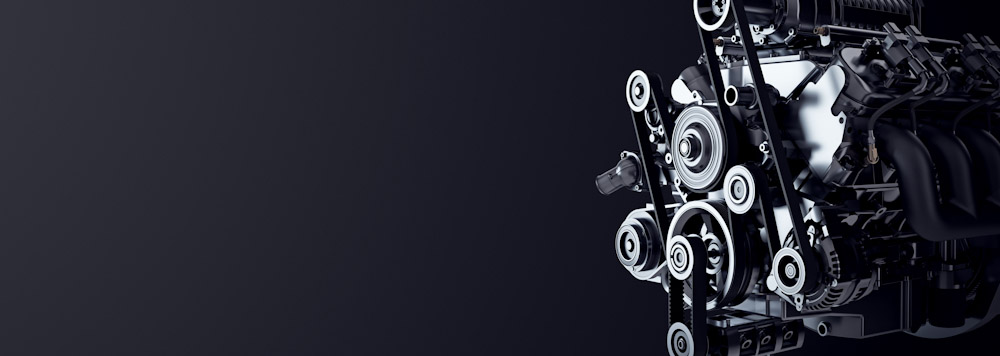
There is perhaps no other part of the car that has commanded the fascination of car enthusiasts and laypeople the world over like the engine. An impressive array of human engineering, the engine has been tinkered with and innovated over the centuries until arriving at this present time, each component working in concert with one another to propel our cars faster and farther and with a smoother ride than ever before.
Today, our cars are predominantly powered by one of two engine designs: the classic internal combustion engine and the electric motor. In order to fully appreciate the efficiency of these two pieces of machinery, it’s beneficial to take a moment to review the path through history they took to get to us.
The History of the Engine
Long before there were auto repair mechanics to become the foremost experts in engines, there were ancient mathematicians and engineers. In the earliest days of these mechanical creations, the word engine referred to basically any apparatus that utilized external forces﹘be they manpower, horsepower, or the power of the elements﹘to make certain jobs easier, either by producing torque, lifting heavy loads, or generating thrust.
- Devices like windmills, water wheels, and treadmills date back to the early days of antiquity. These would serve as the first prototypes of the engines we use today that turn air and fuel combustion into power to spin a crankshaft.
- Gears were eventually invented in the 4th Century China and would eventually be used all over the Middle East and Europe to create crucial inventions like the steam turbine.
- Eventually, the Industrial Revolution would spur the creation of the locomotive, where coal-powered furnaces would create steam that would drive the train forward.
This all served as a preamble to the development of the modern engine as we know it today.
Two Dominant Car Engines
Now, drivers benefit from the engineering marvels that are our current vehicle engines. As was described earlier, there are two particular engines that shape the landscape of the current automobile industry﹘the internal combustion engine and the electric motor. The former, though historically the more popular of the two, defines the road we’ve taken here, while the electric motor represents our inevitable future.
The Internal Combustion Engine
By virtue of its legacy, this engine has been the teacher of many car repair novices who wanted to learn how their vehicles work. Whether you are driving a V6 or a V8 engine, you are still using an engine powered by internal combustion. Not all of these engines are the same, however.
Different Types
There are currently two major types of internal combustion engines:
- The Spark Ignition Gasoline Engine: This is the most common type of car engine, utilizing a spark plug to ignite a compressed mixture of air and fuel to create a controlled explosion in the chamber of the engine, thus powering the rest of the car.
- The Compression Ignition Diesel Engine: Due to diesel’s natural combustibility under intense pressure, a spark plug is unnecessary since it would go off before the diesel fuel was at a sufficiently dense state to ignite. Instead, the engine compresses the diesel with such force that it explodes on its own.
At Master Muffler, the internal combustion engine is the bread and butter of our auto repair business in Pocatello. With our team’s knowledge and experience, engine troubles don’t stay troublesome for long.
The Electric Motor
The electric motor has gone through its own evolutionary process, first being conjured up by prolific inventors like Benjamin Franklin in the 18th Century. Today, electric motors convert electrical energy into mechanical energy by generating torque for the driveshaft through the use of magnets and electrical currents.
Different Types
There are currently two major types of electric motors:
- The Direct Current (DC) Engine: These engines use of a direct source of power like a battery to provide energy to the motor. Most electric vehicles today use this type of engine since cars already come with batteries that can be charged remotely.
- The Alternating Current (AC) Engine: These motors use sources like a power grid or an electrical generator to receive energy to work.
No matter what type of car you’re driving, our professional mechanics will make sure that your engine will receive the best possible auto repairs it requires. Simply drop on by to set up an appointment.
Related Posts
As an EV owner, understanding your vehicle's battery is critical. From its capacity to its lifespan, and everything in between, we'll guide you through what you need to know to optimize your EV experience. So buckle up and get ready - we're about to shed some light on the electrifying world of EV batteries. What [...]
If your car is running hot, it can be a sign that something’s not right with your engine. Fortunately, diagnosing the cause of an overheating engine isn't too difficult if you know what to look for and how to address it. Keep reading if you want to learn the most common issues that occur when [...]
Your vehicle's exhaust system serves a critical role in managing the byproducts of the combustion process and ensuring optimal engine performance. The appearance of colored smoke from the exhaust pipe, either when stationary or accelerating, can provide valuable clues to underlying mechanical issues. What is a car exhaust? A car exhaust is a system [...]





